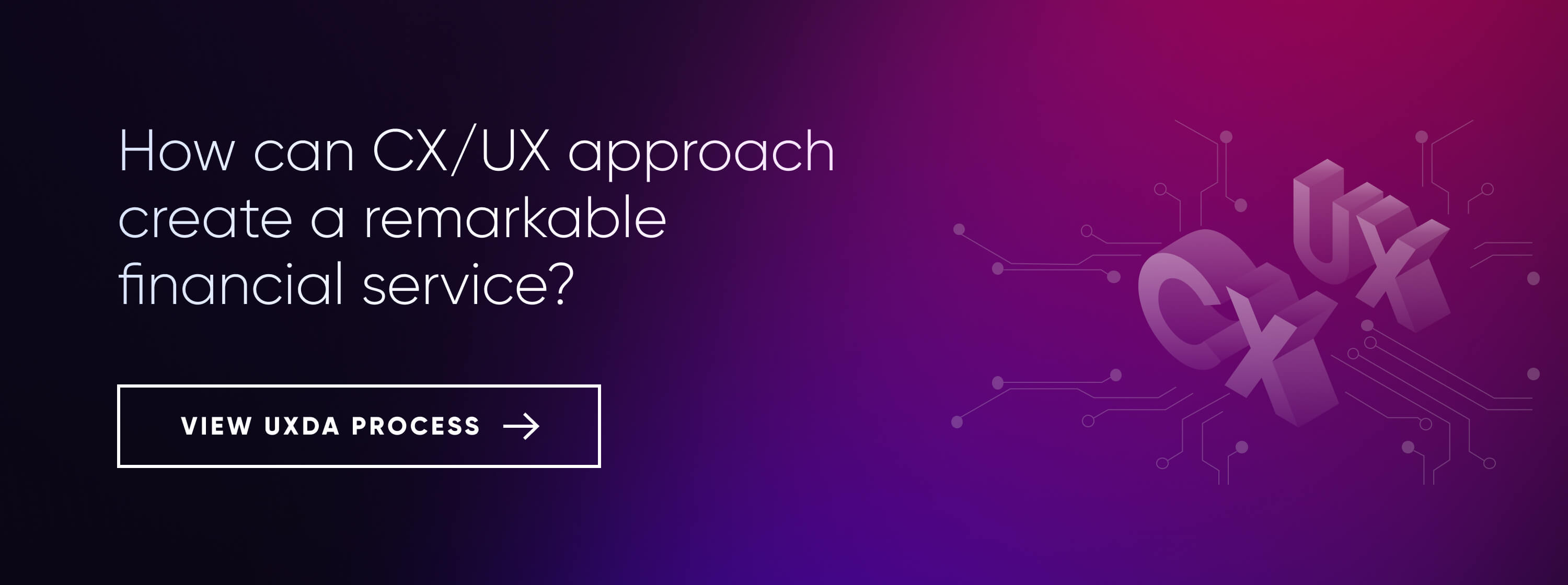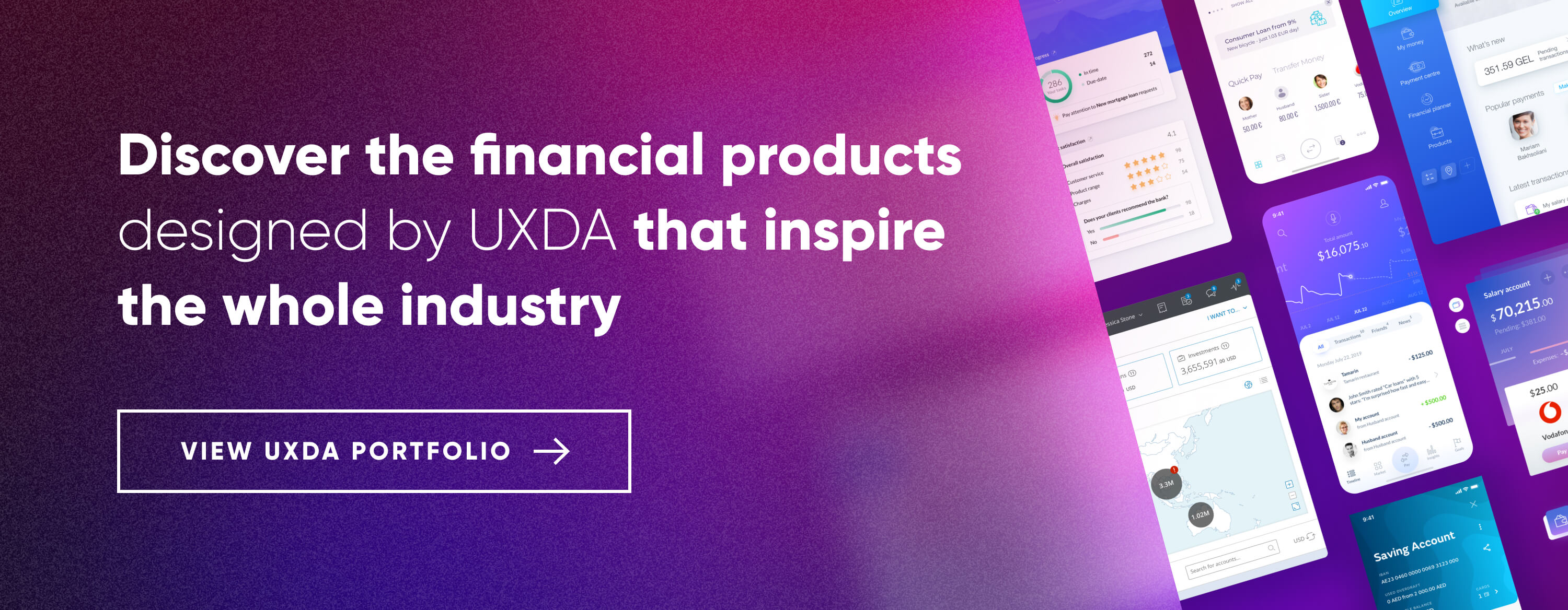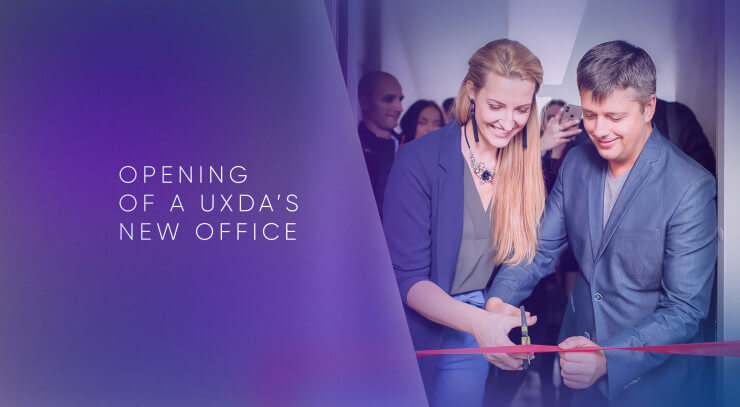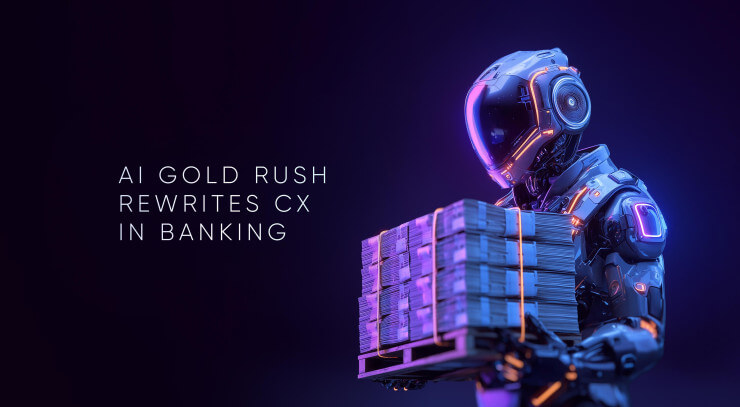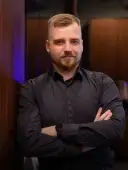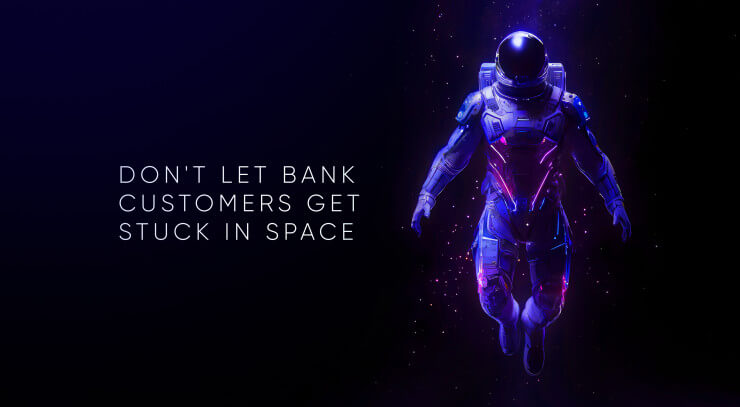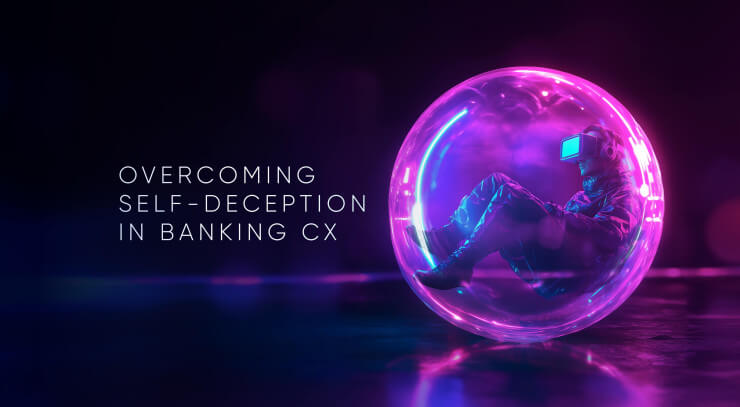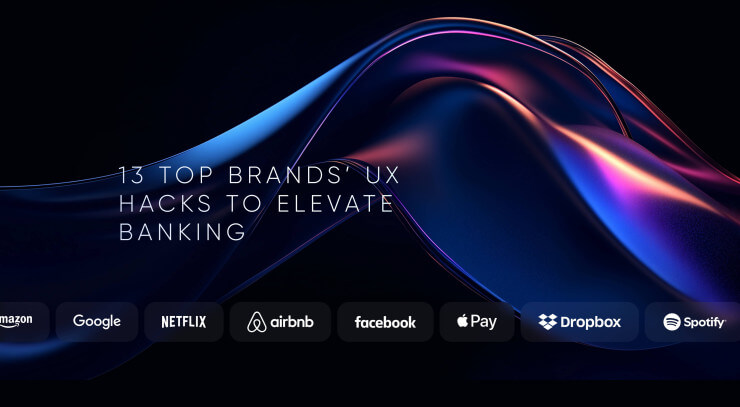Annually, thousands of digital financial solutions are launched around the world. Many of them do not achieve their goals. This is partly due to the design or, specifically, to the design approach of the creators that ignores financial UX design. Many of these products could be successful if their creators took the right action at the right time and changed their approach to design digital finance services.
Over the past five years, we have developed 16,000 screens for financial products and solutions and had conversations with hundreds of banks and Fintech startups. While observing the industry over the years, we have collected a list of the 10 most common financial user experience misconceptions that you should know about if you are aiming to create successful financial solutions.
Misconception 10: Copying the Financial UX Design of a Popular Digital Product
A common myth is that you can look at a successful Fintech design, replicate it and instantly achieve the same measure of service success. There have been thousands of unfortunate attempts to repeat the successes of Revolut, LendingClub, Wealthfront, PayPal, Credit Karma, Mint, Acorns and Robinhood. Blindly copying financial interface or banking dashboard from a popular service will obviously not work.
The uniqueness and success of the product are determined by a number of factors that are not just related to the design of the user interface. It is necessary to understand what exactly is behind this success. Few of the copy/paste attempts have been truly successful. However, if we look closer, their founders discovered a unique niche, created their own business models and invested considerable effort into product development by switching from copying to creation.
Design of a digital banking product involves multiple factors. You need to analyze and take into account everything that makes your financial business and banking product unique and ultimately capture a long-term competitive advantage.
Of course, the interface of popular financial services can become a powerful source of inspiration and a good starting point. This can save some time at the start, but the user interface design is only a part of the financial user experience design. It is important to understand what kind of ideas are behind the design of a particular service and how it creates a user benefit and solves the real customer problems. It is wiser to offer the world your own generated solution for an important problem that provides pleasant banking UX. In this way, your service could become a new standard and a source of inspiration for millions.
Read more about this topic:
Fintech is Disrupting Banking Industry Through UX Design
Design Thinking in Banking Must Overcome These Obstacles
Misconception 9: Financial Professionals Know Exactly what Kind of Service People Need
In Wikipedia, you can find one of the proven cognitive biases - the curse of knowledge. When a person is communicating with others, he/she usually unknowingly assumes that they have the same background for understanding. The simplest example is the use of special terminology in digital financial services designed for mass users. It’s too difficult for ordinary people to understand them.
Actually, your users are often very different from you. Therefore, designing a product you would enjoy could lead to extremely inefficient and unclaimed results. As a financial expert you are definitely extremely passionate about service you have created and its capabilities, but the ordinary users just want to achieve their goals.
Financial specialists are rational persons always in search of the best solution. And they expect that the majority of users will evaluate and use provided financial services in the same way. Unfortunately, real-life financial user experience is different and this does not always happen.
Most people are quite irrational; they make decisions and draw conclusions based on emotions and instincts, which are usually unconscious. Their patterns of behavior are often not optimal, and they follow habits. This explains why many people do not use products in the way their developers conceived.
However, the good news is that knowledge of psychology, as well as experience in the development and testing of financial interfaces, allows taking into account cognitive biases and other parts of user behavior to create best possible banking UX. This is what the financial UX strategists, architects and designers do.
Read more about this topic:
How Banking Industry is Losing Millions by Ignoring UX Design
Digital Banking Products Through Rose-Colored Glasses
Misconception 8: Banking UX / UI design is the Only Thing Needed for Instant Success
Unfortunately, it’s not. Usually, people need time to try a product in order to appreciate it. Despite the fact that digital products often see faster results, they are still subject to the market rules. This means that success depends not only on the digital banking product but also on how and when it is introduced to the market, what support is provided to users, what is offered by competitors, on what terms service operates and many other business factors.
In addition, you should not forget that financial UX design is an iterative process, and it does not stop after the banking product is launched. In the future, the service needs to be optimized and improved based on feedback from customers and usage data. This will take some time, but it's the only way to achieve maximum compliance with market demand.
The most famous internet entrepreneurs on the road to success have spent years preparing, developing, testing hypotheses, correcting mistakes and searching for solutions that are in demand.
Our company had a client who developed a very thoughtful and pleasing financial service, but the customers were not ready to pay a high price for it. The founders decided to change the business model by setting a price that depended on user results, which rocketed the product onto the market.
Of course, proper architecture and functionality of the product, as well as a user-friendly, intuitive and attractive interface, increase the user involvement, frequency of use, user satisfaction and the desire to recommend it to friends. This will highly increase the chances of banking product success. However, it is important to define areas of responsibility, and stay realistic since the financial UX approach alone can’t guarantee a successful business model and immediate market growth without integrated efforts.
Read more about this topic:
Financial UX Design Methodology: the Design Pyramid
The Financial UX Design Formula for Digital Product Success
Misconception 7: UX Design Can Be Provided by any UX Designer
The value and results of financial UX design in the banking industry have generated a significant demand for UX designers. However, the participation of the UX designer in the development of a financial product is not a guarantee of a good result. There are several reasons for this.
First, with only UX and UI, a designer's skills and knowledge are not enough to architect a financial product. This process requires other critical roles such as business analyst, UX researcher, UX architect, information architect and, most importantly, a financial UX strategist who will help generate the correct vision and banking product strategy based on all the collected data and insights.
Second, any user experience specialist, on the one hand, should understand the specifics of the financial industry and have relevant experience but, on the other hand, have valuable experience from other industries as well. Financial UX engineering is not only about design and finance, but also about business, marketing, psychology, behavior and technology. This is the only way to achieve the required expertise and a comprehensive approach to find the best banking UX solution.
And, last but not least, we must not forget that UX is not only limited to interaction with the interface that could be designed by a UX designer. It goes beyond the interface and is a part of a full banking customer experience with aim to ensure the best possible value to a customer. This means that the customer-centered approach should be implemented at each touch point of financial organization, as part of the customer experience strategy.
Read more about this topic:
Successful Digital Transformation in Banking Depends on Value
UX Design Strategy: Digital Banking Trends & Challenges
Misconception 6: UX Design Requires a Huge Investment Available Only to Large Companies
First of all, UX design is a certain philosophy of building products and services, which puts the client's experience at the forefront. In order to ensure the most positive and pleasant experience, the financial UX approach offers a number of steps and techniques.
From UXDA practice, we see that, when it comes to engineering financial digital services, it is especially effective to combine UX design technology with Design Thinking (an approach that can be used to consider issues with a means to help resolve them). This is a source of insight to create intuitive and enjoyable products with the best chance in the market. Even lean UX implementation or using basic principles of Design Thinking impact core business mindset, and bring significant benefits to the organization, as well as are available at no cost.
There are examples of strategy and organizational culture switch from aggressive sales to customer-centered philosophy, and this philosophy is automatically launched disruptive culture in every company's division. Also, cooperation with UX agencies could be helpful for a UX approach implementation, and this is much cheaper than creating a full-fledged UX department in-house.
Our experience shows that organizations that get acquainted with UX design in the digital product engineering process later implement a UX approach in other aspects of their business. It is great when people do not stop and continue this approach by making their business customer-centered. And we are delighted when such clients share with us the excitement and joy of their customers.
One of the most effective approaches for the financial organization is a close collaboration with a UX design agency on the strategy and architecture of the digital product and the ultimate creation of a design system. After completing the product design system, UX design agency supports the team of designers and banking developers during the launch of the first version and further optimization.
For example, UXDA team helps clients to significantly strengthen their team due to our competence in the design of financial services. In fact, our clients adopt the work process and proven principles of the UX approach for the financial industry without spending hundreds of thousands of dollars and years on building this competency from the scratch. Numerous UX case studies show that, in the long term, UX design provides a significant return on investment.
Read more about this topic:
The Financial UX Matrix: How to Become a Disruptor in Banking
Does Your Mindset Fit the Digital Age and How to Improve It
Misconception 5: For a Successful UX Design, Only Functions and Content Data are Required
In fact, the UX architect also needs to understand the business model, i.e. the business context of the service. In addition, the positioning of the product and its business strategy have to be formulated, as well as the context of use—who and why will use the service and what are their pain points and needs.
Often, even in a running business, it is difficult for the client to define and provide such data to a UX expert. It sounds strange, but business stakeholders are not always aware of their service benefits, key sale points and the real reasons behind the customer demand. In such cases, data from UX research not only becomes a starting point for the redesign of the service but also brings strategic benefits to the business.
Based on the researched data, a product vision and strategy is developed to determine its goals, features and scenarios, both for the business and the user, and it must comply with the overall digital strategy of the company.
For example, in our practice, there was a case in which the company had a desire to develop a financial online service, but, in the process of researching the business, their request changed. Our client realized that, for the effective success of the business, he needed to develop a completely different service that would better meet the needs and requests of his customers. As a result, the company launched another service and avoided the loss of funds on meaningless development.
Similar to using “lorem ipsum” to fill in text blocks, design creates an attractive, but not realistic, look, ignoring the broader context of how products cause a complete disconnect from reality. The financial UX design process always goes from top to bottom, from understanding the strategy and context to the specific solution implementation. It is important to remember that the user seeks value in your product. Therefore, its overall meaning is always more important than the final packaging and has to be defined from the start.
Read more about this topic:
Digital Financial Services Fail Without the Problem-Solution Cycle
Financial Services Should Meet Young Customers’ Expectations
Misconception 4: The Design Should Be Unique and Innovative
We see how banks and Fintech startups are chasing innovation to compete with one another in the novelty of technology and design solutions. Today we are all amazed by the incredible possibilities of new technologies, but this does not mean that, if you include it in the digital product, it will ensure the perfect UX and huge demand. Yes, it can draw attention to the product from the media and cause envy from its competitors, but a lot of users could become frustrated by unusual and unexpected functionality.
Most customers do not have the time and desire to learn new technologies, so its implementation should occur gradually and organically, without threat to the key features. In this case, innovators will be able to enjoy new features, and mass users will keep the necessary tools to solve their problems. After all, in the final analysis, the decision is made not by the jury of some award contest, but by users who most often need delightful banking UX with the simplest and most intuitive solution to solve their problems.
For example, one of the key trends of modern design is simplicity, but often simplicity is understood as ultra-minimalism. At the same time, numerous studies prove the controversy of such solutions as icons without signatures, non-standard user interface elements, concise menu icons—essentially a hamburger. Such a design can look great on design awards, but not always suitable for the majority of users.
Therefore, the oversimplified design is just as destructive to the service as the over-complicated one. As Albert Einstein said, "Everything should be made as simple as possible, but not simpler."
Often, you do not need to reinvent the wheel, but rather use those patterns and solutions that are already tested and familiar to users. In this case, you can rest assured that instructions for your service will not be needed. Finance is already difficult to understand, so Steve Krug's advice, "Don’t make me think" in relation to financial interfaces is hard to overestimate.
Read more about this topic:
How Banking Innovation Could Ruin UX: Blockchain, Open Banking and AI
Banking Services are Doomed if Information Architecture Ignores Pain Points
Misconception 3: Design Should Be Based on the Data and Users’ Opinions
It is difficult to argue with the fact that data-driven design is an extremely promising approach in the digital design industry, particularly in the financial industry, taking into account the large volume of Big Data concentrated in financial services. The advantages of this approach are clear: statistically justified design of the solution, measurable results of design decisions and testing and selection of the best-performing solutions.
Essentially, this is a scientific system, clearly aimed to achieve maximal and measurable conversion. The main slogan of this approach: no random actions, only a design justified by figures. For a manager of any financial institution, this is a very tempting way to shift responsibility from design solutions to the data.
Anyway, it is important to wisely choose the targets and evaluate the effectiveness of this approach. If our task is to optimize the conversion of the landing page, or the catalog of products in the online store, AB testing and usage statistics could surely help to identify best opportunities.
Unfortunately, data can't take into account the context of user behavior and reactions. For example, changing the color or moving call-to-action buttons, can cause a temporary increase in conversion as a result of the novelty effect. However, as users get accustomed to the change, the conversion will return to the previous level.
Data-driven design means getting data on specific elements, irrespective of the human psychology and behavior-wide context, which is variable and could change with time. It means that data on certain color performance for a group of users could lose their relevance in a year due to the emergence of a new trend—a trend that was probably launched by the product and not shaped by user preferences, but rather affects them.
For example, attempts to directly ask users about the ideal product for them can lead to unfortunate consequences. As Henry Ford stated, "If I had asked people what they wanted, they would have said faster horses." Do not lose the responsibility of the creator. Remember that data and test results are not answers, but rather hints. A good source of data could be monitoring of the service usage, but, without user’s feedback, it still doesn't represent the complete picture.
It is important to divide the test environment and real life. After all, users are unaware of how they will use any service in reality because it depends on the learning curve, the actual comfort zone, their needs, cognitions and demands. UX professionals should take into account these and many other objective and subjective factors in the design process of specific financial services.
According to our observations, data-driven design is very effective for optimizing the conversion of concrete UI elements. Also, digital data is important in the UX study phase for making more informed decisions in the UX engineering process. But, to create a strategy and vision for a new digital product, you need a holistic approach that takes into account business features, market conditions, user characteristics and technology capabilities and their impact on one another.
In the future, the further development of artificial intelligence will probably allow data-driven design to enter a new level, but, considering disruptive services, the study of the bios of their genius founders causes us to doubt this. Often, between the ordinary concept and the design breakthrough lies an irrational gap that requires human intuition and talent to overcome.
Read more about this topic:
Financial UX Design is About Saving People's Lives
How to Use User-Centered Design to Grow Demand for Financial Services
Misconception 2: Users Need Hundreds of Features to Be Satisfied
One of the most enlightening experiences in my life was participation in a startup, the aim of which was to create a social network that combines the best of the world's social services. Needless to say, this project was doomed to fail. The investor ran out of money, the team lacked competence, and the users were simply disappointed by the long wait.
This "everything for everyone" approach can be dangerous not only for Fintech startups but also for banks. Usually, the main aim is to deliver ultimate value for users and grab the market share. The logic is primitive: the more functions we provide, the more satisfaction we get from all types of users. But, in real life, it doesn’t always work due to the decision paralysis effect. Too many choices frustrate users, and they refuse to use the service in favor of simpler analogs.
In our practice, we recommend learning about the Minimal Viable Product concept delivered by start-up ideologists. Before starting a project, it is important to understand which key functions are most in demand by your customers. For example, most consumer banking users actively use 20% of the features. Does this mean that the bank should get rid of the remaining 80%? Of course not. We just need to ensure users get fast and easy access to perform key tasks.
For this purpose, a properly structured architecture and the use of “white space” in the interface can help. White space helps to accentuate the most important UI elements and reduce the cognitive load on a user. Inspiring UX examples can be found from the largest Fintech companies.
I think we are all familiar with overdensity in the interface. Some financial service founders are afraid of free space and try to fill the entire space with information in order to ensure that users have everything at hand. As a result, working with such a service in real life requires too much effort from the user.
Try to not overload your users and leave enough space either on the interface level or at the feature level. Harmonious and elegant layout and UI element hierarchy allows a user to quickly scan and make intuitive choices.
Read more about this topic:
7 Steps to Make Your Banking Service or Fintech Simple
Financial UX Design Methodology: the Value Pyramid
Misconception 1: Aesthetics are not Important - Interface Design Should Be Functional
For a long time, financial products were complex and incomprehensible. Recently, finance companies started to become customer-centered. Now, the main task for financial design is clear and intuitive interfaces. Unfortunately, sometimes clarity is perceived as contradictory to aesthetics. Of course, on the internet, there are many examples of how an uncontrollable flight of a designer's fantasy creates an incredibly beautiful but absolutely not user-friendly interface. However, this does not mean that an intuitive and clever architecture of a digital banking product cannot be packaged into a pleasant and enjoyable interface to provide a satisfactory banking user experience.
We must not forget that humans are emotional by nature. Emotions also play a key role in the financial sphere, which was successfully proven by Nobel Laureate Daniel Kahneman. Aesthetically attractive design can enrich the user experience of interaction, and consequently increase its satisfaction and loyalty to the financial service.
Don Norman is an apologist for emotional design, and his book, Emotional Design: Why We Love (or Hate) Everyday Things, shows an example of how aesthetics can bring worldwide fame to common things. Why? Because it makes people happy, offering them a delightful and meaningful user experience.
In the digital environment, an ideal example of the emotional power of design is digital games. To every financial service architect, I suggest exploring the principles of creating products in the gaming industry. They are not only usable but have a pleasing and seductive design that is an actual challenge for all of us in financial UX engineering.
Read more about this topic:
Seven Proven UX Design Hacks Checklist for Creating a Delightful Banking UX
Get UXDA Research-Based White Paper "How to Win the Hearts of Digital Customers":
 If you want to create next-gen financial products to receive an exceptional competitive advantage in the digital age, contact us! With the power of financial UX design, we can help you turn your business into a beloved financial brand with a strong emotional connection with your clients, resulting in success, demand, and long-term customer loyalty.
If you want to create next-gen financial products to receive an exceptional competitive advantage in the digital age, contact us! With the power of financial UX design, we can help you turn your business into a beloved financial brand with a strong emotional connection with your clients, resulting in success, demand, and long-term customer loyalty.
- E-mail us at info@theuxda.com
- Chat with us in Whatsapp
- Send a direct message to UXDA's CEO Alex Kreger on Linkedin



